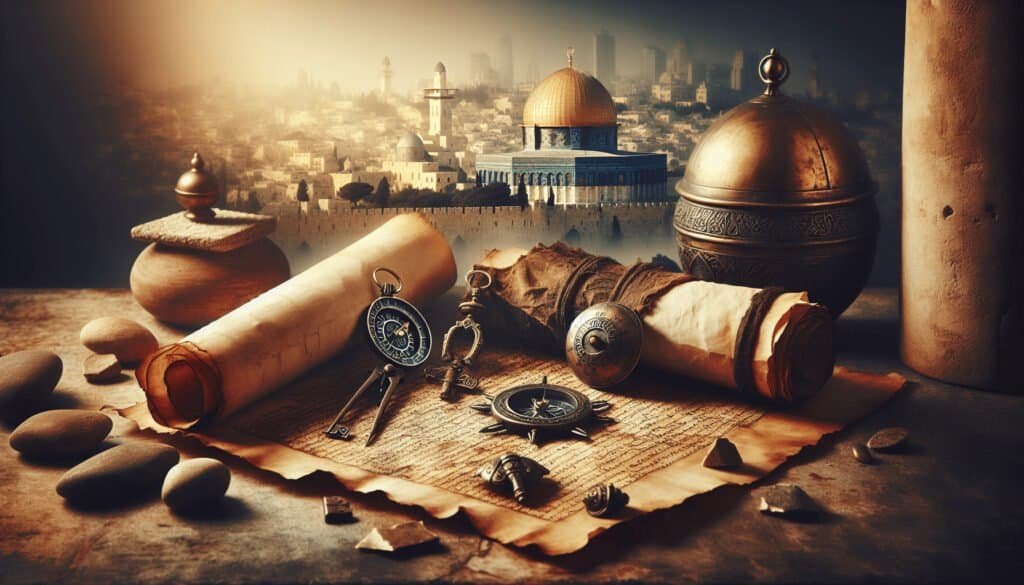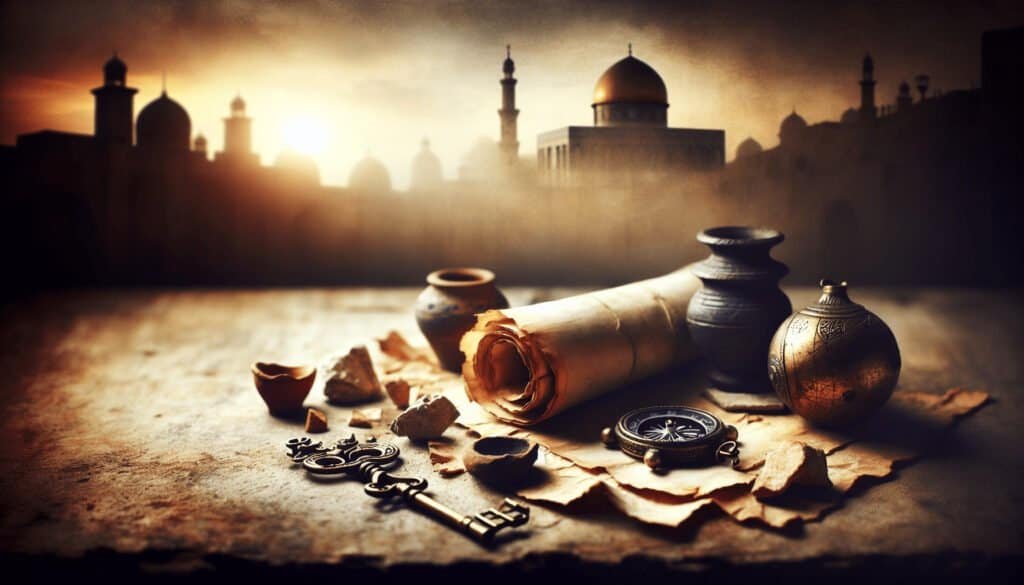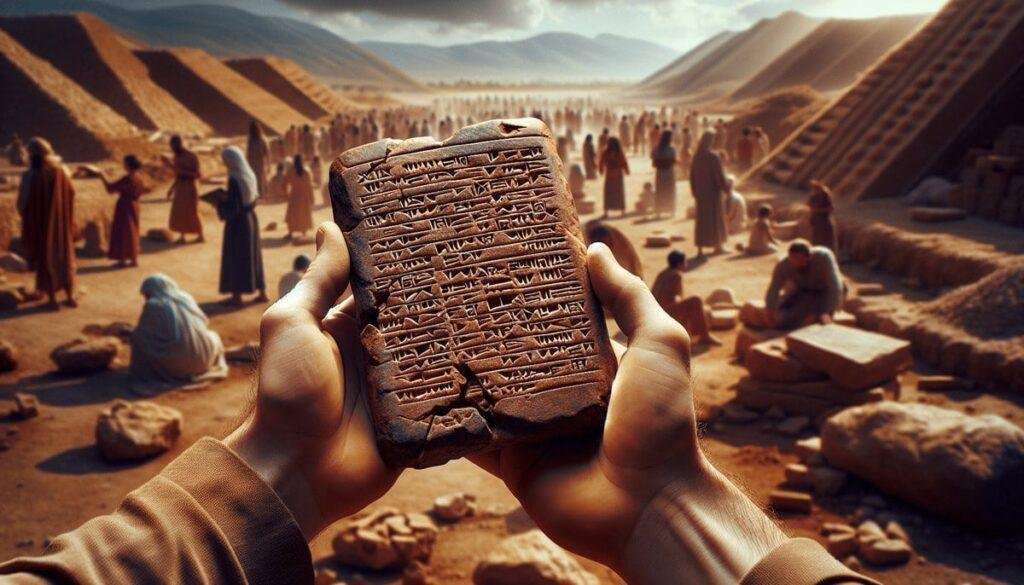What if you could unearth secrets hidden beneath the stones of one of the oldest cities in the world? Picture yourself walking through the winding streets of Jerusalem, surrounded by history whispered through the ages. You might not realize it, but buried within these ancient paths lies a treasure trove of stories—especially concerning the prophetic gathering of exiles. Let’s unravel this captivating narrative together.

The Historical Context of Exile
You may find it fascinating to consider the concept of exile, especially within the tumultuous history surrounding Jerusalem. Exile isn’t merely about physical displacement; it represents loss, longing, and the complex interplay of identity and belonging.
Ancient Exile in Biblical Context
In the Bible, exile serves as a recurring theme. Take, for instance, the Babylonian exile when the people of Judah faced displacement after the fall of Jerusalem in 586 BCE. The emotional weight of this event ran deep, shaping not just religious practices but also how the Jewish people perceived community and home.
Prophetic Voices: A Call to Return
Find it intriguing how prophets played pivotal roles during these periods of exile? Ezequiel, for instance, promised a day when God’s people would return to their homeland. This hope isn’t just wishful thinking; it’s a testament to the human spirit’s resilience.
Archaeological Discoveries: Evidence of Exiles
Let’s shift gears a moment and talk about archaeological findings. These discoveries do more than just support scriptural narratives; they bring to life the very experiences of those exiles.
The Siloam Inscription
One significant artifact you’ll find captivating is the Siloam Inscription. Discovered in Hezekiah’s Tunnel, it details the construction of an underground aqueduct—an engineering marvel for its time. This inscription reaffirms the city’s resilience and sophistication during its formative years.
The remains of Ancient Jerusalem
As you wander through the Old City, think about the layers upon layers of history beneath your feet. Archaeologists have unearthed remnants of ancient structures, offering a glimpse into the lives of those who spent their days in the shadow of the Temple. One prime site, the City of David, reveals evidence of habitation dating back thousands of years.

The Prophetic Gathering: A Closer Look
Now that we’ve brushed up on the historical and archaeological aspects, let’s focus on the prophetic gathering of exiles as recorded in various texts.
Scriptural Foundations
In the book of Isaiah, you come across verses that foreshadow a gathering of exiles. Isaiah 11:12 states, “And he will raise a banner for the nations and gather the exiles of Israel; he will assemble the scattered people of Judah from the four quarters of the earth.” This promise indicates a unifying hope that resonates deeply across generations.
Modern Interpretations
With the resurgence of Jewish self-determination in the 20th century, this prophetic gathering began to take on new meanings. You can’t help but draw parallels between the ancient texts and contemporary movements of diasporas returning to their homeland.
The Hidden Compartment: A Symbolic Space
Here’s where it gets even more intriguing—the idea of a “hidden compartment.” What does that mean, especially in the context of the prophetic gathering?
The Temple’s Secret Chambers
Picture, if you will, the Temple of Solomon, a structure brimming with religious significance and architecture designed with purpose. According to tradition, the Temple housed hidden chambers where sacred rituals occurred, away from the public eye. These spaces symbolize divine communion and secrecy, resonating with the longing of exiles seeking connection to the divine.
The Ark of the Covenant
You might find it compelling to discuss the Ark of the Covenant, believed to hold the tablets of the Law. Its mysterious fate is a topic of fascination, with many searching for it for centuries. In Jewish thought, the Ark represents God’s presence among His people. The idea that it was hidden away during times of turmoil evokes a sense of urgency for the exiles to seek restoration.
Cultural Significance of the Gathering
As you ponder the effects of exile and prophecy, consider the broader cultural significance of these gatherings, both ancient and modern.
Festivals and Rituals
Traditionally, festivals like Passover and Yom Kippur arose from the pain of exile, offering hope and remembrance. These practices connected the Jewish community cohesively, fostering unity despite distances.
The Art of Storytelling
Storytelling plays an essential role in preserving culture. The tales of exile from generations past have been passed down, enriching the community’s identity. Through art and literature, these themes resonate, transforming personal experiences into a collective narrative.
Contemporary Implications: Gathering of Exiles in Today’s World
The themes of gathering and exile have permeated contemporary society. In our interconnected world, you can see how groups often experience feelings of alienation and a yearning for belonging.
The Global Refugee Crisis
The modern refugee crisis reminds us of the plight of exiles. As nations grapple with migration and its complications, the sentiments expressed in prophetic texts echo louder than ever.
Building Bridges, Not Walls
Amidst these challenges, efforts to foster understanding and connection among diverse communities light the way forward. New initiatives aimed at building inclusive societies resonate with the ancient prophetic themes of gathering and restoration.
Conclusion: The Ever-Relevant Legacy
As you walk away from this exploration, you’re left with the profound realization that the stories of exiles and their prophecy remain relevant today. The hidden compartments beneath Jerusalem don’t just reflect a physical space; they symbolize the layers of history that impact our present choices and values.
Reaffirming Continuity
By seeking out these ancient narratives, you reconnect with the profound truths of human existence—identity, belonging, and hope. Just as the exiles sought Jerusalem and the communities they’ve built over centuries, you too search for your own space of solace and security in a rapidly changing world.
In this journey, may the echoes of the past guide your path, as you reflect on how stories from Jerusalem still resonate with our modern lives. After all, the narrative of human longing and the quest for home transcends time and geography, knitting together the fabric of who we are.


